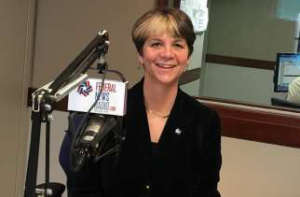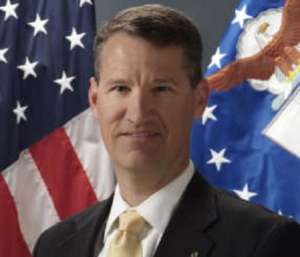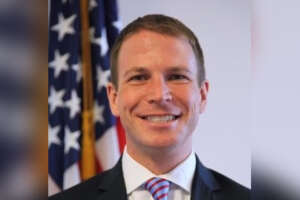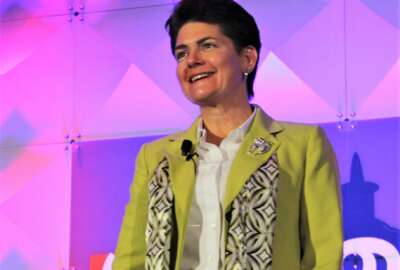
Federal CIO Kent brought vision, energy, leaves legacy of accomplishments
Federal News Network asked 10 members of the federal IT community to offer comments and insights about the impact Federal CIO Suzette Kent has had on the government...
The surprising announcement on June 25 that Federal Chief Information Officer Suzette Kent is leaving after two-plus years on the job reverberated across the federal community.
Agency and contractor executives expressed gratitude for her service and impact on the community, and sadness because her departure is at least six months sooner than many expected.
Kent, who joined the Trump administration in January 2018, didn’t bring the usual credentials of previous federal CIOs. She hadn’t worked for government before—like a Karen Evans or a Mark Forman—and her background didn’t expressly show any expertise in the technology sector—like a Tony Scott. She came from a career in the private sector, working at Ernst & Young where she had been a principal in the financial services office and at JP Morgan Chase and Accenture in the financial services sector.
In her short time at the Office of Management and Budget, experts from across the community say Kent’s impact is significant, long-lasting and notable.
“Suzette has been an amazing partner on the sharing quality services cross-agency priority goal, the Technology Modernization fund, IT modernization, the centers of excellence, the Enterprise Infrastructure Solutions (EIS) adoption, and a myriad of other programs and initiatives,” said Emily Murphy, the administrator and close partner on all of these initiatives at the General Services Administration, in a statement to Federal News Network. “On behalf of all of us at GSA, we will miss her technical expertise and her passion for progress.”
Federal News Network asked 10 people who worked closely with Kent over the last two years for their opinion on her impact on the federal IT community.
Suzette’s legacy on the federal IT community
John Zangardi, former Homeland Security Department CIO and current president of Redhorse Corp.: Suzette has an uncanny ability to think strategically and sensibly deliver executable plans that better position the federal government to modernize and digitally transform. She showed that a federal CIO can make a positive difference. She is a huge loss to the federal government and set the bar high for future federal CIOs.

Renee Wynn, recently retired NASA CIO: Suzette brought vision, energy and an amazing ability to build diverse teams to achieve results for the benefit of federal services. She will be remembered for the way she worked with people to advance the Federal IT Acquisition Reform Act (FITARA), how she solidified the importance of IT modernization through the TMF and corresponding act, sowed the roots of digital transformation and helped women “see” that it was possible for women to hold top executive level positions in IT.
Matt Cornelius, Alliance for Digital Innovation and former OMB senior technology and cybersecurity advisor: Well, the community is so much bigger than it was when she started. We have a White House that is all in on IT modernization, a Congress that’s incredibly interested in improving federal IT and cybersecurity. Folks outside of just CIO offices and vendors care about, and are personally invested in, accelerating digital transformation. The “federal IT community” is now all members of the government, the vendor community and, importantly, the non-traditional and emerging technology companies that are eager to do business with agencies. That’s largely due to Suzette’s compelling vision and energetic advocacy ensuring federal technology transforms the lives of citizens.
Dave Wennergren, executive director ACT-IAC and a former deputy CIO at the Defense Department and vice chairman of the CIO Council: Suzette has done an outstanding job leading the federal IT community. Her energy and vision have been contagious. Her work to advance the President’s Management Agenda has helped government agencies focus on the most pressing technology issues and make real progress.
She also was extremely generous with her time; always willing to go “above and beyond” to engage with industry in a very meaningful way, supporting the work of good government organizations and other non-profits and always being willing to talk a little longer with an interested government or industry employee on how they could make a difference. She focused on mission and outcomes; shaping the technology conversation to be less about IT for IT’s sake and more about results.
John Weiler, executive director and co-founder of the IT Acquisition Advisory Council (IT-AAC): Suzette spent much of her time messaging and speaking about ways forward, trying to get the dug-in culture to change. Her shortcomings were related to failing to correct flawed approaches to Technology Business Management and agile, allowing the old guard rice bowls to prevent the change that was directed in Congressional directives.
What are 1 or 2 of her most notable accomplishments and why?
Bill Zielinski, the city of Dallas CIO and former GSA assistant commissioner of the Information Technology Category: Certainly among her notable contributions over the last several years, Suzette has championed the role of chief data officers, been a tireless advocate for developing and reskilling the federal IT workforce and helped to push through several large federal IT policy updates (think here of the Identity, Credential and Access Management memo, or the Trusted Internet Connections (TIC) update, or the Cloud Smart policy, etc.). The work that she has led in these initiatives are foundational and will set the tone for years to come.
A little less publicly visible, she has done so much to organize and mobilize the Federal CIO Council as a cohesive, forward-leaning and action-oriented group. She has expanded the scope of activity of the council and enabled members to lead important initiatives.
Trey Hodgkins, president of Hodgkins Consulting and former senior vice president for policy at the IT Alliance for Public Sector: I think that last effort, focusing on updating government instruction and guidance related to IT is a really meaningful legacy that will guide the use of information technology long past her departure. The information that has been either updated or created for agencies sets the tone and direction of most of the efforts to digitize the federal government and modernize the use of IT and, if history is any indication, it will serve to direct agencies and departments well into the future.
Bill Marion, former Air Force deputy CIO and now managing director of growth and strategy in its defense and intelligence practice at Accenture: In the position, collaboration and communication of a vision is the most important aspect to accelerate cross-agency and department strategies. Suzette was the consummate example of this, as one trade rag said, ‘the CIO of CIOs’. Two key accomplishments were:

Cyber Reskilling Academy. While some may question the success, I believe it’s a foundational element of our most critical shortfall: equipping a digitally-minded workforce. I think this program has opened the eyes and hearts of many and I’m confident it will span follow-on activities.
Federal Data Strategy. I’m not sure many are aware but such a strategy is exquisitely hard to develop and coordinate. Moreover, it’s a core to the “data is a strategic federal asset” that we haven’t leveraged sufficiently. So again, this strategy will live beyond her tenure and empower future generations.
Mike Hettinger, principal at the Hettinger Strategy Group and former House committee staff member: When I think about her most notable accomplishments, I think about the update of the federal government’s cloud policy, moving from Cloud First to Cloud Smart, bringing forward a recognition that one size doesn’t necessarily fit all and that agencies should have the flexibility to choose the right cloud solution — public, private, hybrid or multi-cloud — to meet their individual needs. I also think about the federal data strategy and the recognition of the criticality of data in the decision-making process. It was her efforts that really drove the Federal Data Strategy forward. I’ll also think about her impact on customer experience, and the push that OMB made during her time to get agencies to better utilize digital tools to serve citizens. And lastly, her work on cybersecurity matters, including the update to the Trusted Internet Connections policy are to be commended.
Gordon Bitko, senior vice president of policy for Public Sector at IT Industry Council and former FBI CIO: One of the best examples of Suzette’s many notable accomplishments is the delivery of the Federal Data Strategy, and associated action plans, which highlights the strategic importance of data not just within but across agencies.
Zangardi: What is important is knowing that your CIO boss has your back and supports you. When I asked her for help with a tough problem, I knew I could count on her. She engaged and made a major contribution that reduced DHS data center cost and expedited our move to the cloud. I know that her support here isn’t widely known. But it left a lasting impression with me and the DHS management leadership at the time.
Cornelius: Having IT modernization as the number one priority in the President’s Management Agenda. If you view the PMA as the principle treatise on how the government operates and for whom it operates — the American people — this was a recognition by the administration that technology was the key connective thread between federal agencies and citizens. Modernizing and adopting commercial technology moved from a focus on improving operational efficiency and cost savings to creating and delivering a complete citizen digital experience. Now that this foundation and understanding has been built, it will continue on for decades to come.
Another great accomplishment, which is harder to describe because it is so sprawling, is that there wasn’t a priority Office of the Federal CIO took on during her tenure that didn’t show tremendous improvement. Whether it was the TMF, government adoption of cloud and commercial capabilities, federal cybersecurity, the Federal Data Strategy, shared services or enhancing the skills of the federal workforce — each and every critical program or project she oversaw moved in a dramatically positive direction during her time at OMB.
Weiler: Her successes include an update to cloud policy, with Cloud Smart, and drafting of several President Management Agenda focused policies and orders around cybersecurity. Unfortunately, her office spent more time talking than doing.
Wennergren: She refocused cloud efforts through her “moving from cloud first to cloud smart,” recognizing that cloud priorities must encompass so much more than just moving IT infrastructure to the cloud, and highlighting the importance of new security strategies to include zero trust and data-level security and focusing on the thousands of legacy systems still operating at agencies. Her engagement on emerging technology issues has resulted in a surge in robotic process automation (RPA) and interest in intelligent automation. Similarly she promoted the imperatives for data and digital (coincident with the passage of the two statutes) and worked hard to leverage the requirements of MGT and the TMF.
What about her 2-plus year tenure surprised you the most about her approach to managing federal IT?
Hodgkins: I think the most surprising thing about her tenure was that when she started, she was a relative unknown in the IT space, but she established herself quickly as a strong leader on IT policy and made substantial inroads and advancements across the technology spectrum. She became a visible and vocal proponent for government IT causes and efforts and has helped advance the use of IT in the federal government far beyond where things were when she began. Most recently, she guided the issuance of OMB Memorandum M-20-19 that spelled out for agencies what things they can do, what steps they should consider and what authorities they possessed to position the government as a resource for both agency employees and citizens. I’ve enjoyed working with her and her office and I think we will advance IT in the public sector in the context of her legacy for several years to come.
Marion: Her constant smile and energy, and I’m not surprised, but it’s great to see such a woman-in-tech role model shaping the many federal civilian careers to come.
Hettinger: Having worked with nearly all of the federal CIOs during my time in Washington, I found Suzette to be among the most approachable and transparent of all those CIOs. Her leadership and style will be missed.

Wynn: I am surprised at how much I miss seeing her and working with her! I believe others will feel the same because she made solving problems look easy and a lot of fun. She made each person feel special. Suzette Kent’s leadership is born from her true belief that each person has something great to give. Suzette has an inspiring presence and can distill complex problems into comprehensive solution plans — from individual efforts to legislative needs. She makes each person feel like they are the most important and this removes “no” and “can’t be done” from responses.
Cornelius: Her humility. Regardless of all the accolades and awards, she knew that the real successes in the broader federal IT and cybersecurity landscape came from the diligence, creativity and drive of the broader federal IT community. She knew there were so many wonderful people doing such important, transformational work, and she always wanted to identify and elevate those “success stories” (her favorite phrase). I can’t recall a speech she gave, or a team meeting we had when I was at OMB, when she wasn’t celebrating the hard work and accomplishments of others.
Copyright © 2025 Federal News Network. All rights reserved. This website is not intended for users located within the European Economic Area.
Jason Miller is executive editor of Federal News Network and directs news coverage on the people, policy and programs of the federal government.
Follow @jmillerWFED






